Plant Water Regulation
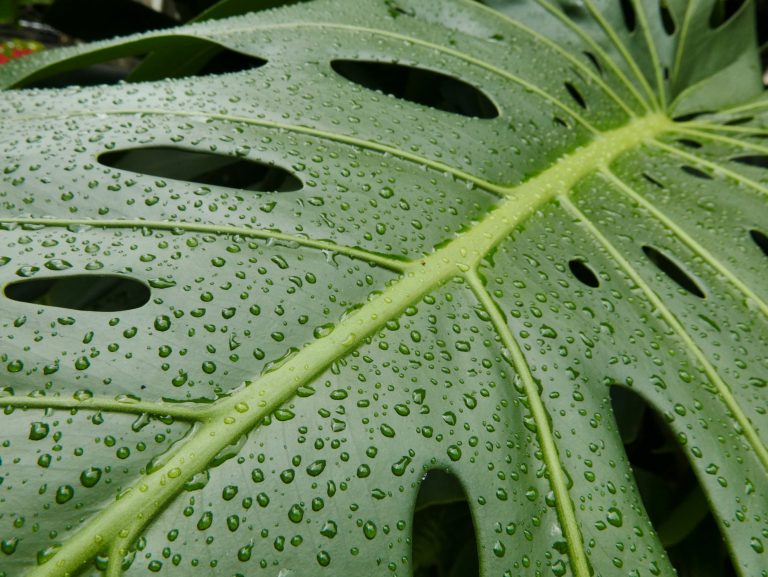
Swiss cheese plants have holes in their leaves as part of their water regulation scheme. The holes allow their leaves to spread to greater extent without having to expend valuable energy and nutrients in filling up the leaf spaces.
Table of Contents
A plant requires water as an essential ingredient of photolysis, the photochemical stage of photosynthesis where water is split using light energy. This is the part of the process in which a plant obtains its’ energy, and thus illustrates the importance of water to a plant.
Water is absorbed from the root and is transported to all areas of the plant, this passage of water is called the transpiration stream. Water is absorbed by the roots of a plant, which possess many root hairs with large surface areas for extensive absorbing of water. We have already discussed how osmosis occurs across a concentration gradient in preceding tutorials, and this is the case here.
When water is required and the concentration of water in the roots is low, water is absorbed from the higher concentration of water found in the ground. This same occurrence goes for the concentration difference between cells, as the water-rich root cells allow osmosis to occur up the plant until there is an equal concentration throughout the organism.
Scientists were previously perplexed by the nature in which water could defy the force of gravity and move up the plant since water molecules are heavier than the surrounding atmosphere. Through extensive studies, the following factors are thought to play a role in pushing water up the transpiration stream.
Root Pressure
This factor is brought about by osmosis and the unequal concentration of water across the plant. Osmosis will occur up the plant until there is an equal concentration
Capillarity
This is due to adhesion, the force of attraction between two different particles. When water passes up the thin xylem tubes, it adheres to its surface area, while the force of osmosis gently pushes the water molecules to their desired location
Transpiration Pull
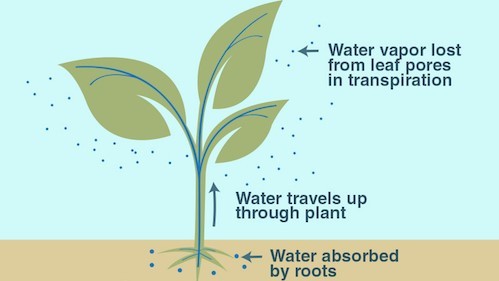
This is thought to be the major force that allows water to be transported throughout a plant. Water is transpired by a plant via stomata, which means water concentration in these areas will be especially low. Since osmosis occurs across a concentration gradient, water will ‘rush’ into these areas to even out the water concentration across the plant.
It is an eventuality that water is lost in some way, such as through the stomata, similar to how humans lose water through respiration when breathing out. Stomata are also the source of CO2 which a plant required for photosynthesis, and while stomata open in daylight for the intake of CO2 when most photosynthesis occurs, this allows an increased loss of water to the external environment.
These stomata structures alter in size according to their turgor, which is mostly determined by the water concentration in them. When water concentration drops in the stroma areas, the opening to the external environment closes. Stomata, therefore, play a regulating role in the homeostasis of water control. During a particularly hot day, while the stomata are open for photosynthesis, transpiration can occur at a much higher rate due to the temperature. When this occurs, the water concentration drops in the stomata and therefore it loses turgor, and in turn, the stomata opening closes. This ensures that water concentration is kept near its preferred level. This type of water transpiration occurs in mesophyte plants, which occupy climates that are of average rainfall and of average temperature.
Xerophytes, such as many species of cactus, live in a more extreme environment. Evolutionary adaptations have allowed them to survive and prosper in such ecosystems as the deserts of the Earth. These evolutionary adaptations effectively reduce the transpiration rate of a plant, and promote water retention, and are as follows;
Curving of Leaves
The leaf surface curves in on itself, meaning the water transpired remains in close contact with the leaf. The result is a high concentration of water adjacent to the leaf surface, which will move across the concentration gradient of water back into the plant. In this instance, less of the leaf surface area is exposed directly to the atmosphere.
The same effect is acquired in the concept of double insulated walls that are used in modern housing, where a cavity between inside and outside reduces the rate of diffusion between cold and hot air – meaning that heat retention is improved in a similar way to the water retention example above.
Hairy Stomata
This has the same effect of curved leaves, preventing a clean break of water into the atmosphere from transpiration. Water molecules stick to these hairs, due to the adhesive attraction between the two structures.
Lower frequency of Stomata
Fewer stomata across a plant means less opportunity for water to escape.
Varying species of xerophytes also possess other various evolutionary adaptations suited to their existence. Areas that lack a steady flow of rainfall house plants with roots are spread across the grounds’ surface, to absorb as much water as possible while they have the chance.
Hydrophytes are plants that live their lives in an aquatic environment, and face different problems from xerophytes. They receive the oxygen they require from fluid-filled spaces that store oxygen for as and when it is in demand. One other problem (comparable to the wind) is the continuous water currents that barrage the exterior of the plant. In water, things weigh around two and a half times lighter than they would above ground. The plant must have a flexible nature to cope with the strains of this water current, and evolutionary adaptations in such hydrophytes have reduced the amount of xylem found in such plants. This is elementary as these plants, which are surrounded in water do not have to rely on the forces related to the transpiration as much as their above-ground counterparts.
Recommended reading: Shinozaki, K., & Yamaguchi-Shinozaki, K. (2006). Gene networks involved in drought stress response and tolerance. Journal of Experimental Botany, 58(2), 221–227. https://doi.org/10.1093/jxb/erl164 (Gene expression during the drought-stress response in plants and the functions of genes implicated in the stress response and/or stress tolerance are summarized in this review article).
You will also like...

Ecology & Biodiversity: New Zealand Flora & Fauna
New Zealand is known for its unique biodiversity, caused by its remarkable geography and geologic history. Breaking away..

The Origins of Life
This tutorial digs into the past to investigate the origins of life. The section is split into geological periods in the..

Sugar Homeostasis
The blood sugar level is regulated by two hormones. The mechanism behind this type of negative feedback control is descr..
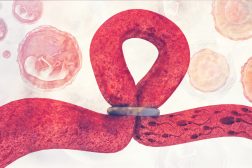
Birth Control and Contraception
Different pregnancy and birth control and contraception strategies are described. Read this tutorial to learn each of th..
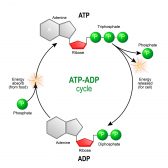
ATP & ADP – Biological Energy
ATP is the energy source that is typically used by an organism in its daily activities. The name is based on its structu..
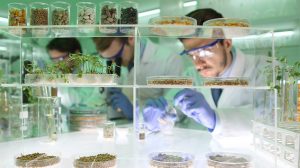
Regulation of Biological Systems
Regulation of Biological Systems tutorials are focused on the modulation of biological systems from cell to population l..
